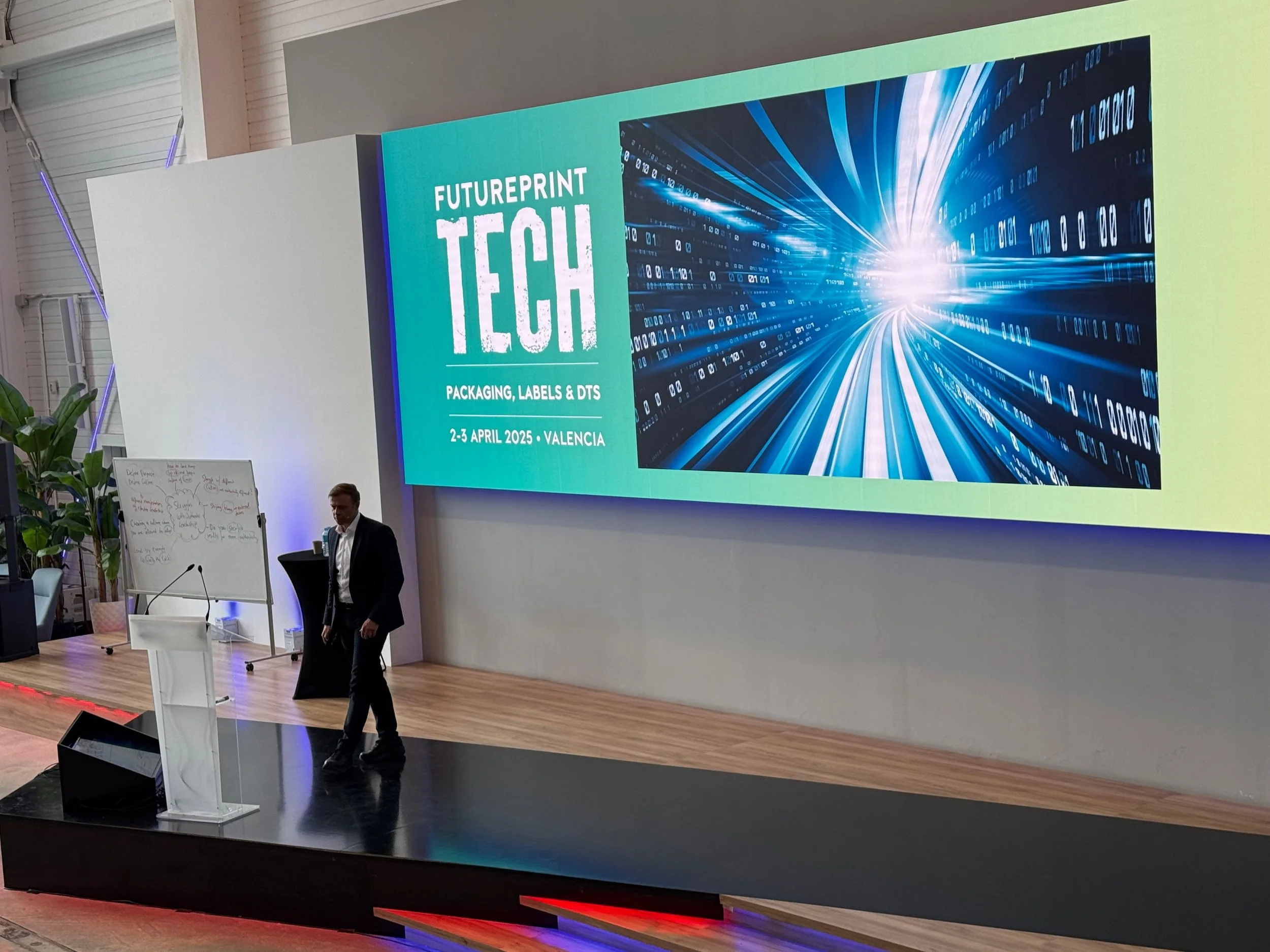Rewriting the Rules of Corrugated Packaging: BHS Corrugated’s Case for Digital Integration
At the FuturePrint conference in Valencia, Nils Gottfried from BHS Corrugated presented a clear thesis: the traditional architecture of corrugated box production is outmoded, and digital integration offers both a technical and commercial remedy. The company outlined how its BHS Jetliner series could reconfigure the production process by embedding high-speed inkjet printing directly at the corrugator—eliminating entire stages of the conventional converting chain.
In a sector where margins are thin and speed to market has become a critical differentiator, BHS Corrugated is betting on digital to reduce operational complexity. Its BHS Jetliner Monochrome system, tailored for one-colour applications, enables inline printing at corrugator line speeds. The implications are material: fewer changeovers, no print plates, less waste, and lower resource use. These efficiencies, make the system suitable for integrating into both existing and new corrugators, supporting a leaner and more adaptive production model.
Beyond process gains, the proposal introduces a shift in how corrugated products might be commercialised. Box plants could bypass traditional print and finishing lines for certain applications, using the BHS Jetliner Monochrome to handle variable data, serialisation, and high-resolution text directly on the corrugator. The result is not only faster lead times but also a reduction in inventory risk, thanks to more agile, print-on-demand workflows.
The broader digital portfolio includes the BHS Jetliner Xceed, which supports CMYK+ printing on both coated and uncoated substrates using a roll-to-roll format. While that system is aimed at more complex graphic work, the BHS Jetliner Monochrome reflects a targeted approach—transforming monochrome jobs, often considered low-value, into a point of process leverage.
Technically, the company claims a robust and serviceable architecture. Components include a central impression cylinder, print inspection tools, automated head cleaning, ink recirculation, and redundancy features designed to maintain uptime. Print heads come from Fujifilm, and the machine layout is described as inkjet-optimised. The firm also develops its software stack in-house, ensuring compatibility and control over workflow.
Environmental and economic pressures have forced converters and brands alike to reassess legacy systems. Rising substrate costs, demand for sustainability credentials, and consumer-facing traceability requirements all feed into the digital narrative. Variable QR coding and short-run seasonal packaging are no longer fringe use cases—they are rapidly becoming table stakes.
From a market perspective, the integration of monochrome digital print directly onto corrugators alters the role of traditional sheet plants and feeders. In the model presented, pre-printed sheets can be sold as semi-finished goods, with higher margins and reduced capital tied up in downstream print capacity. Sheet plants could phase out their own printers and rely instead on high-quality printed stock delivered from integrated corrugator operations.
It’s a pragmatic proposition—one that does not rely on speculative technology or dramatic shifts in consumer behaviour. Instead, it reframes a longstanding industrial process to respond more precisely to present-day constraints.
Whether this approach will scale depends less on enthusiasm for digital print and more on the discipline of operational execution. But BHS Corrugated’s message in Valencia was unambiguous: the path to resilience in packaging lies in simplifying what has long been over-complicated.

